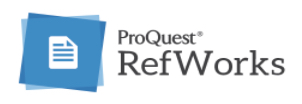When information is quoted, paraphrased, or summarized, the source of that information must be documented (cited). Otherwise, you are guilty of plagiarism. For more information about how to avoid plagiarism, please visit the Library's Academic Integrity Portal.
Various organizations have created guides or handbooks for academic and professional writing that incorporate standards for citing sources. Although Island Studies is multidisciplinary, much of the IS research published to date falls, broadly speaking, with the realm of the social sciences and humanities, in which the most widely-used citation standards are those of the American Psychological Association (APA), University of Chicago Press ("Chicago Manual"; sometimes referred to as Chicago/Turabian), and the Modern Language Association (MLA). A quick introduction to each of these standards is offered below; further information can also be found in the Library's Citing Sources guide.
Your professor may have specified which standard you should follow; if not, you can choose any generally-accepted standard, but you must then follow it consistently throughout your paper.
"APA Style" -- Publication Manual of the American Psychological Association (7th ed. -- 2020)
This style is the choice of many social science writers, and is especially useful for papers containing extensive statistics and tables (it is also the citation style used by Island Studies Journal). To allow readers of an academic paper to easily locate the sources of information used in that paper, APA provides rules for a system of in-text citations, pointing to more detailed information in a reference list at the end of the paper.
There are a great many guides, tip sheets, tutorials, etc. for APA style available online. This Quick Guide to APA 7th Referencing from the University of Newcastle (Australia) strikes a good balance in providing a reasonable amount of information -- supported by examples -- while also being quite concise.
The "Reference Examples" provided by the APA Style online platform are also helpful.
If you can't find directions online about how to cite a particular information source using APA style -- or if the directions are unclear or of uncertain reliability -- please note that the Library Service Desk has print copies of the latest edition of the full Publication Manual of the American Psychological Association (Call # BF76.7.P83 2020) available for in-Library consultation. Your subject librarian will also be pleased to assist you with citation questions.
Chicago Manual of Style (17th ed. -- 2017)
"Chicago Style" provides for two different types of reference citations. Traditionally, those in literature, history, and the arts use the Notes and Bibliography Style, while many in the physical, natural, and social sciences use the Author-Date System.
There are a great many guides, tip sheets, tutorials, etc. for Chicago style available online. The guide from Williams College Library does a good job of clearly distinguishing Chicago's Author-Date and Notes-Bibliography styles, with numerous examples provided for each.
The "Quick Guide" examples provided by the Chicago Manual of Style Online are also helpful.
If you can't find directions online about how to cite a particular information source using Chicago style -- or if the directions are unclear or of uncertain reliability -- please note that the Library Service Desk has print copies of the latest edition of the full Chicago Manual of Style (Call # Z253.U69 2017) available for in-Library consultation. Your subject librarian will also be pleased to assist you with citation questions.
** A companion to "Chicago style," targetted primarily at postsecondary students, is Kate L. Turabian's Manual for Writers of Term Papers, Theses, and Dissertations, popularly known as "Turabian". The Library Service Desk has a print copy of the latest edition of this manual (Call # LB2369.T8 2018) available for in-Library consultation.
MLA Handbook (9th ed. -- 2021) * formerly MLA Handbook for Writers of Research Papers
Developed by the Modern Language Association of America, this is the preferred citation style in languages and literature, as well as some other disciplines in the humanities. With its use of in-text citations and detailed references at the end of a paper (referred to as a "Works Cited" list in MLA), MLA style has broad similarities to APA and Chicago/Turabian author-date, but there are also important differences, especially around presentation of author names, publication dates, etc.
There are a great many guides, tip sheets, tutorials, etc. for MLA style available online. The MLA Citation Style, 9th Edition guide from the University of West Florida Libraries provides an intuitive and detailed introduction, supported by clear examples.
The "Citations by Format" examples provided by the MLA Style Center online are also helpful.
If you can't find directions online about how to cite a particular information source using Chicago style -- or if the directions are unclear or of uncertain reliability -- please note that the Library Service Desk has print copies of the latest edition of the full MLA Handbook (Call # LB2369.G53 2021) available for in-Library consultation. Your subject librarian will also be pleased to assist you with citation questions

Refworks is a web-based reference management tool which you can use to create and format bibliographies using various citation styles. UPEI maintains an instititional subscription to Refworks, so that it can be used by current UPEI students without charge. More information of setting up and using your UPEI Refworks account is available here.
Created by: Betty Jeffery, B.A., M.L.S.
Former Instructional Services Coordinator
Date Created: 09-December-2003
Revised by: Simon Lloyd, B.A., M.L.I.S.
Island Studies Liaison Librarian
Date Revised: 10-September-2021